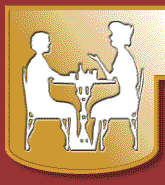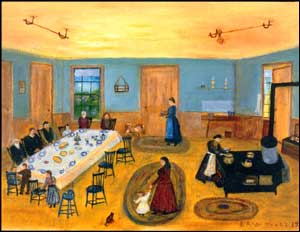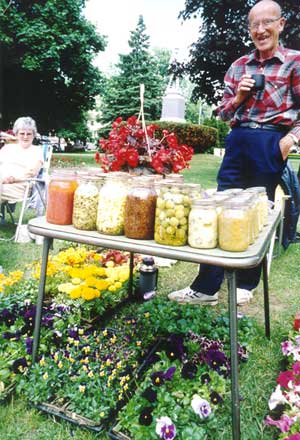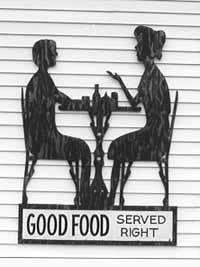

 How do you like your French fries? With ketchup so thick you have to help it out of the bottle with your knife? Or do you prefer salsa? With gravy and cheddar cheese curds? How about vinegar and salt? When it comes to morning pancakes, do you demand syrup from Mrs. Butterworth, or do you want the real thing, direct from the farmer's maple sugarhouse? In fact, are you particular that it is "dark amber" or "fancy"? And what do these individual choices matter to anyone but you? Believe it or not, they can be as revealing as personality tests and sociological studies. Like other traditions passed down in families and communities, the food we eat can offer important clues to who we are, where we come from, and what has special meaning for us.
How do you like your French fries? With ketchup so thick you have to help it out of the bottle with your knife? Or do you prefer salsa? With gravy and cheddar cheese curds? How about vinegar and salt? When it comes to morning pancakes, do you demand syrup from Mrs. Butterworth, or do you want the real thing, direct from the farmer's maple sugarhouse? In fact, are you particular that it is "dark amber" or "fancy"? And what do these individual choices matter to anyone but you? Believe it or not, they can be as revealing as personality tests and sociological studies. Like other traditions passed down in families and communities, the food we eat can offer important clues to who we are, where we come from, and what has special meaning for us.
Food choices may be among the most revealing things about our personal upbringing and our general culture in this modern world. While many of our longstanding folk traditions have vanished or have been greatly altered over the years, traditional foods and customs associated with them have remained important to many Americans. In modern life, few people still pay much attention to the old beliefs about weather or home remedies for ailments; little do most of us know about the dances or songs or stories our ancestors brought with them from Europe or Africa or Asia; in fact, the languages used for centuries to pass the knowledge of old customs along have all but disappeared from daily life for most of us.
 You can't necessarily say the same about food. Despite the fact that most modern Americans don't raise gardens or animals out of necessity any more or that hunting and fishing have become recreation rather than essential to life, many of us have held onto traditional foods and customary activities for using them, at least once in a while.
You can't necessarily say the same about food. Despite the fact that most modern Americans don't raise gardens or animals out of necessity any more or that hunting and fishing have become recreation rather than essential to life, many of us have held onto traditional foods and customary activities for using them, at least once in a while.
For many people, foodways have been the last form of folk expression to go. Why is that? Obviously, there is a universal need and use for food for all of us to live. Second, for most of us, food habits-like our daily three-meal schedule [plus snack times] or distinct food choices for breakfast or Sunday night lunch-are among the first things we learn in life and may be the longest remembered. Third, the skills taught to us as children by a favorite uncle for raising vegetables at home or foods served to us as children by doting grandmothers give us a tangible link with our past and, if we expose such experiences to our grandchildren, we feel a connection to the future. Studying food can also be informative-about nutrition and health, about diverse cultures, about our own community and family. And, maybe most important of all, it can be fun. I for one can attribute more than a few additional pounds to the rigorous work I have done over the years in studying food!
The information about food and related customs we seek as students of folklore does not come from the Nutrition Facts panel on a jar of mayonnaise or from the pages of the Bon Appétit magazines we thumb through at the dentist's office. Instead, our interests generally focus on domestic, everyday cookery. Historically, such foods have not been commercial or institutional and have not been nutritionally oriented. And "foodways," the comprehensive term to describe the range of activities associated with food in our lives, include all stages of the process we humans use-food production, preservation, preparation, and consumption. In addition, food can be important as symbols-like bread and wine in Communion-or in celebrations. What's a birthday without cake and ice cream or a July 4th picnic without hot dogs and potato salad? To better understand the origins and importance of something as common to all of us as food, and the differences among us, folklorists even examine traditional patterns of use by groups, common beliefs associated with foods, customs of serving and eating, as well as oral narratives and expressions about food. "Let's not cry over spilt milk," my grandmother would say, or "apple-pie order," "not worth his salt," or "eating crow."
Differences for us in America often relate to the places we live and the individual immigrant or ethnic histories among us. That all shows up particularly well in the foods we eat. While the current young generations have generally been raised on a standardized diet made convenient by modern supermarkets and fast food chains, evidence of historical differences still remain. Some regions of the country still have well-known local food specialties because they grow well there: seafood on the New England coast, beef on the Great Plains are good examples. In other places, where ethnic groups settled and have influenced local culture, their foods are very common, even a good reason to visit: Pennsylvania Dutch, African Americans in the Mississippi Delta, Cajuns and Creoles in southwest Louisiana, Mexican Americans in the Southwest, and Asian Americans along the West Coast have all contributed to the local cuisine.
 To learn more about the real nature of life in New York's North Country, we have taken a close look at food in our own communities. TAUNY's GOOD FOOD SERVED RIGHT project began in the late 1980s when we began work on a series of short documentaries for North Country Public Radio, which we called Home Cooking: The Folk Art of Good Food. Soon after those broadcasts, we organized a traveling photographic exhibition which featured many of the photographs in this website module. The photographs show a surprising diversity of expressions of local life through the food we eat. Several years later, we published Good Food Served Right: Traditional Recipes & Food Customs From New York's North Country, a collection of essays about local food customs, recipes from local families, and sketches about the histories of relevant communities in the region. Written and edited by folklorist Lynn Case Ekfelt, it is a wonderful resource, recognized as the national first place winner of the prestigious TABASCO Community Cookbook Award in 2000. Our most recent addition to this study is this website module, launched in 2002.
To learn more about the real nature of life in New York's North Country, we have taken a close look at food in our own communities. TAUNY's GOOD FOOD SERVED RIGHT project began in the late 1980s when we began work on a series of short documentaries for North Country Public Radio, which we called Home Cooking: The Folk Art of Good Food. Soon after those broadcasts, we organized a traveling photographic exhibition which featured many of the photographs in this website module. The photographs show a surprising diversity of expressions of local life through the food we eat. Several years later, we published Good Food Served Right: Traditional Recipes & Food Customs From New York's North Country, a collection of essays about local food customs, recipes from local families, and sketches about the histories of relevant communities in the region. Written and edited by folklorist Lynn Case Ekfelt, it is a wonderful resource, recognized as the national first place winner of the prestigious TABASCO Community Cookbook Award in 2000. Our most recent addition to this study is this website module, launched in 2002.
The traditional foods of the past, made at home daily of ordinary materials on the farm or from neighborhood markets, become rarer all of the time. Modern life has greatly altered many customary ways of our past: time spent together as families-especially around the dinner table- is rare; having someone at home to prepare meals everyday is less than likely; all of us, at whatever age, are warned by doctors to watch our diets for both content and quantity, and foods that were once exotic to us--because they grew in different climates or were the preferences of cultures we'd never encountered-are now common in even our small town markets.
So, ironically, the older foods-head cheese, sauerkraut, johnnycake, challah bread, homemade ice cream, and so on-which take time and patience to make may be made once or twice a year now, and then for special times, like Christmas or Passover or reunions. These are the times left in our lives when we still make supreme efforts to reinforce family and community, and food still plays a central role. Otherwise, you are most likely to find them as "luxuries" in more public settings, like church suppers, ethnic festivals, men's organizations' fish or game feeds, or in diners, bakeries or farm stands which cater to the local trade. These local favorites may even be promoted to willing customers for their "homemade" or "homegrown" characteristics.
Who knows what is next? I assume it's very likely that birthday parties at the neighborhood fast food restaurant, complete with games, decorations, party hats and paper crowns, and favorite foods from the drive-in window are already a tradition for more than a few families. If that's the case, we will be here to observe them and to find the answers why. In the meantime, let's eat!
©2002 Traditional Arts in Upstate New York